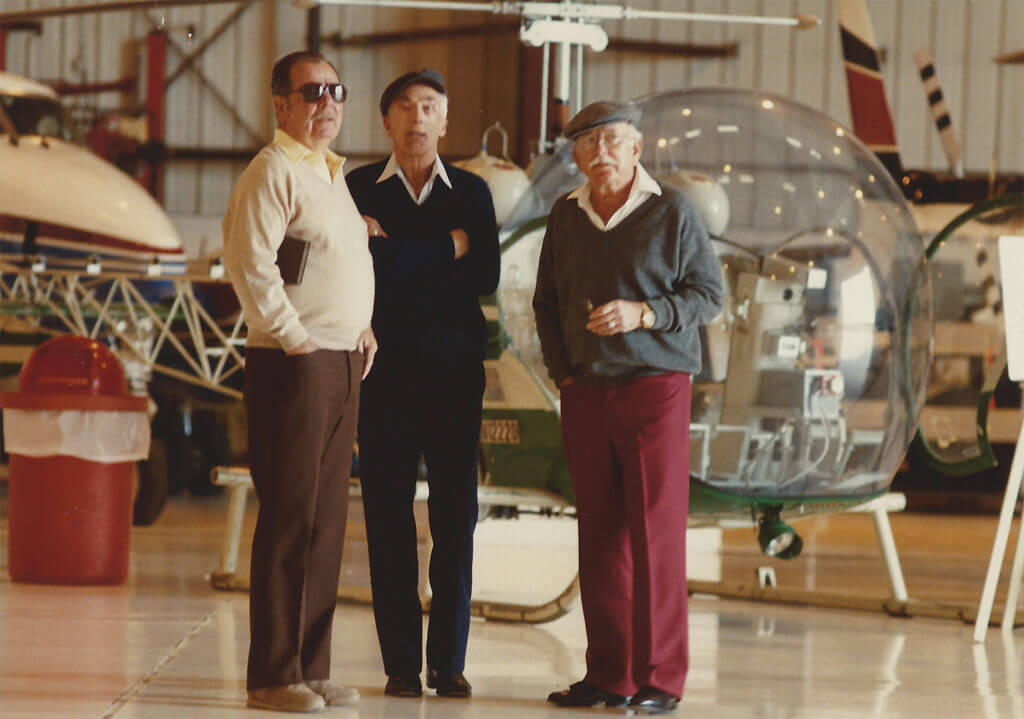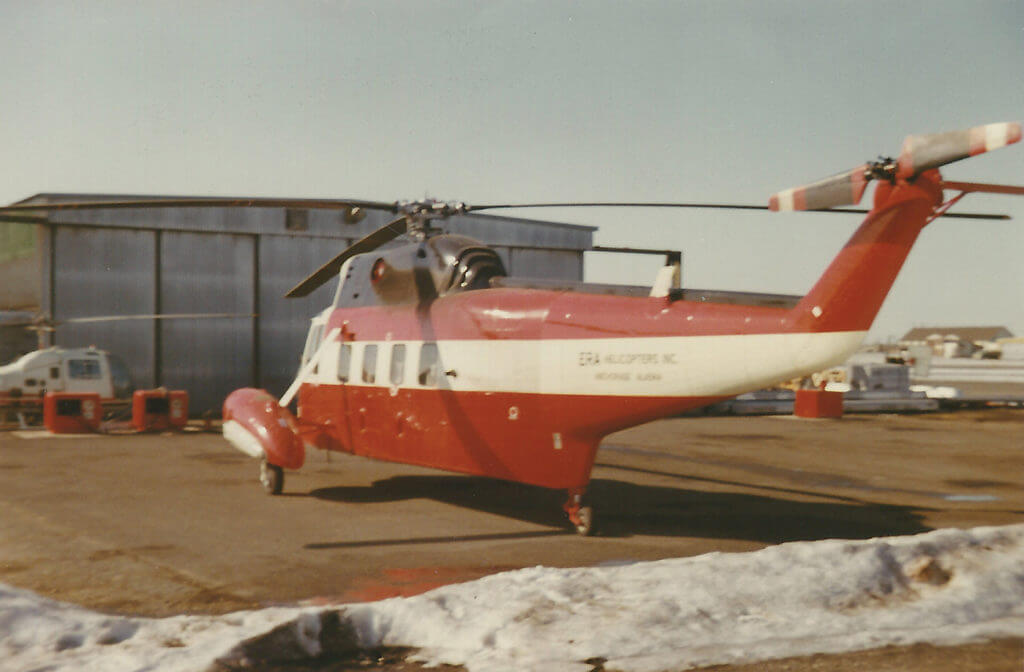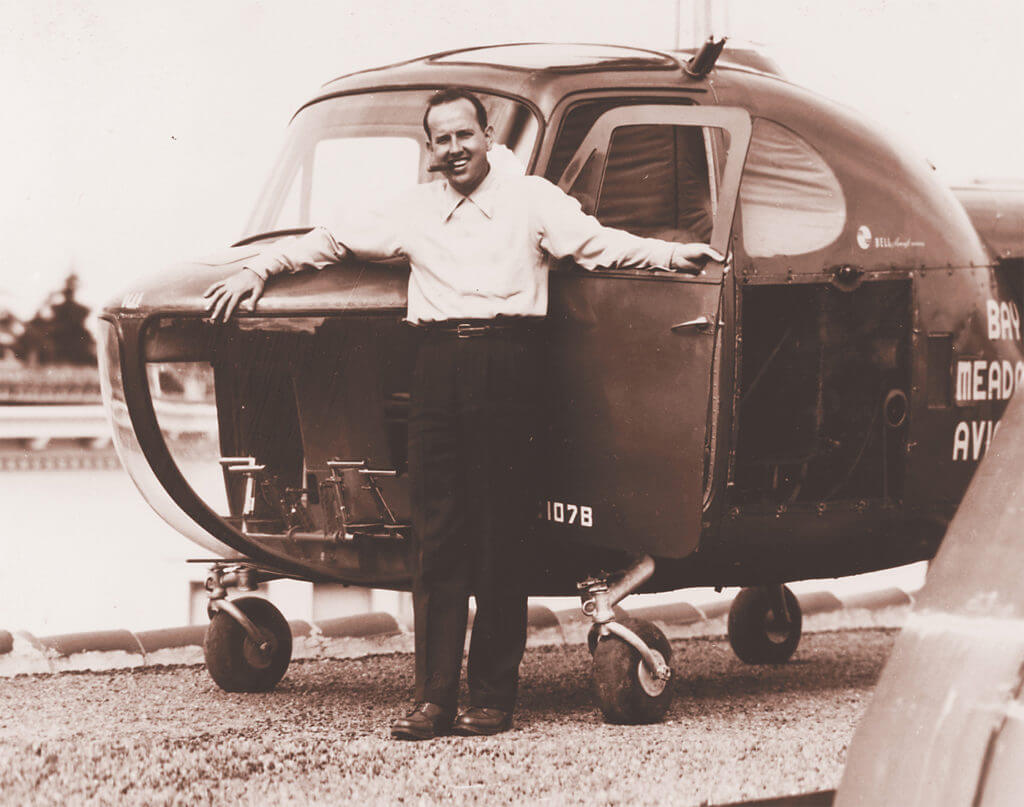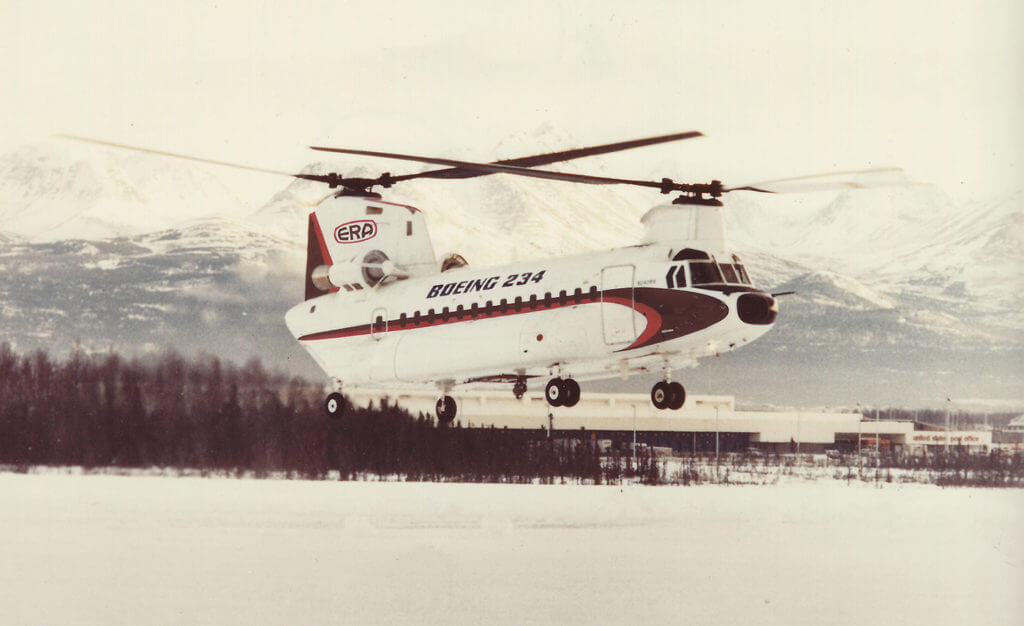Era Helicopters (Era Group) began life in 1947 as Economy Pest Control of Yakima, Washington. Its real foundation, however, started the following year, 1948, when Carl Brady saw an opportunity to prove the helicopter’s worth on mapping work in the Territory of Alaska. The 70-year journey that followed his fateful decision transformed not only the aviation world, but also an entire state.
 An array of firsts
An array of firsts
How do you tell the story of 70 years of aviation firsts? That’s the question we put to Paul White, Era Group’s senior vice president, Commercial.
For a veteran pilot like White, it starts with all the helicopters Era has flown. “The fleet is just impressive. We’ve owned and operated pretty much everything you could possibly fly.”
So many of the helicopters Era and its predecessors brought to the mission were aviation firsts–either the first time the model was used commercially in Alaska or, occasionally, the first time it debuted anywhere in the world. Said White, “That trend starts in 1948 with Carl Brady bringing the first commercial helicopter, a Bell 47B, to Alaska.”
Other helicopters Era debuted include the Aérospatiale AS332 and AS350; Bell 204B, 205A-1, 206A, 214ST and 412; Boeing 234; Eurocopter EC225; MBB Bo.105; and Sikorsky S-55, S-58, S-61, S-62 and S-64E Skycrane.
 From the first larger helicopters in the 1950s, to the turbine-powered ships of the ’60s, and larger transport helicopters and heavy-lifters of the late ’60s, ’70s, and ’80s, Era was always on the leading edge of helicopter technology and usage.
From the first larger helicopters in the 1950s, to the turbine-powered ships of the ’60s, and larger transport helicopters and heavy-lifters of the late ’60s, ’70s, and ’80s, Era was always on the leading edge of helicopter technology and usage.
Resourceful and resilient
Looking back on those models shows how far the company has come from its early days–when Brady used to drain the oil from his Bell 47 and store it under his cot at night to keep it from freezing.
Of course, those early days taught the company and the industry a lot.
That first Bell 47 Brady brought to Alaska wasn’t exactly suited to the conditions there.
“The pucker brush and tundra of Alaska just doesn’t support wheeled operations,” said White. The helicopter would just sink into the soft ground. On uneven ground, the helicopter would roll away. That led to some very creative thinking. It seems Brady and his mechanic tied oak two-by-fours to the wheels, essentially creating the first pair of helicopter skids.
 One incredible story Brady was known to tell became the impetus for the company’s current focus. Said White: “Era’s current mandate is Safety, Efficiency and Reliability. However, in the ’40s, ’50s and ’60s, helicopters were nowhere close to being reliable. Brady would be out flying and something would break and he’d be stuck on an island. He would literally have to send up smoke signals to try to relay what part he needed to the pilot of a passing fixed-wing aircraft.
One incredible story Brady was known to tell became the impetus for the company’s current focus. Said White: “Era’s current mandate is Safety, Efficiency and Reliability. However, in the ’40s, ’50s and ’60s, helicopters were nowhere close to being reliable. Brady would be out flying and something would break and he’d be stuck on an island. He would literally have to send up smoke signals to try to relay what part he needed to the pilot of a passing fixed-wing aircraft.
“They would go back to town–that’s an Alaska term for civilization–and get the part. Flying as slow as they could, they’d chuck the part out the window to him. Sometimes it’d be all the way up in a tree and he’d have to climb up to get it and then do a self-repair before he could fly out of there.
“That’s how the business was. So, everything we’ve done since then has been working on the reliability of the aircraft, and ensuring the fleet and the technology and all the things that support the mission and the crews are there.”
Transforming the industry
While many operators have played an important role in the regions they operated in, Era literally transformed its area of operations. Brady helped map Alaska, his helicopters played a role in building the Trans-Alaska oil pipeline, and his company helped provide commercial and civilian access to countless areas of the Last Frontier.
 Era was also instrumental in transforming helicopter aviation. Said White, “In 1998, a Sikorsky marketer had a great quote in an article, saying, ‘While Igor Sikorsky invented the helicopter, Carl Brady surely invented the helicopter business.’ [Anchorage Daily News, 1998] From survey, to medevac, to utility, Brady would figure out a way to use the helicopter to get it done efficiently and profitably–at a time when helicopters were not near as productive or efficient as they are now.”
Era was also instrumental in transforming helicopter aviation. Said White, “In 1998, a Sikorsky marketer had a great quote in an article, saying, ‘While Igor Sikorsky invented the helicopter, Carl Brady surely invented the helicopter business.’ [Anchorage Daily News, 1998] From survey, to medevac, to utility, Brady would figure out a way to use the helicopter to get it done efficiently and profitably–at a time when helicopters were not near as productive or efficient as they are now.”
In later years, Era not only helped establish instrument flight in Alaska, but also pioneered the use of radar to aid instrument approaches in both Alaska and the Gulf of Mexico.
Everything it has done and learned continues to drive today’s mission to provide safe, efficient and reliable helicopter services, which extends beyond its organizational boundaries to help improve helicopter aviation as a whole.
Still, you get the feeling White would trade the comforts and reliability for a chance to fly with Brady in those early days.
 “Those guys were tough and resourceful,” said White, his voice tinged with the kind of admiration that comes from someone who grew up in Alaska and saw the challenges those crews would have faced. It makes the accomplishments of those generations very special and underpins 70 years of excellence that have helped Era become one of the world’s leading helicopter operators.
“Those guys were tough and resourceful,” said White, his voice tinged with the kind of admiration that comes from someone who grew up in Alaska and saw the challenges those crews would have faced. It makes the accomplishments of those generations very special and underpins 70 years of excellence that have helped Era become one of the world’s leading helicopter operators.






 An array of firsts
An array of firsts


